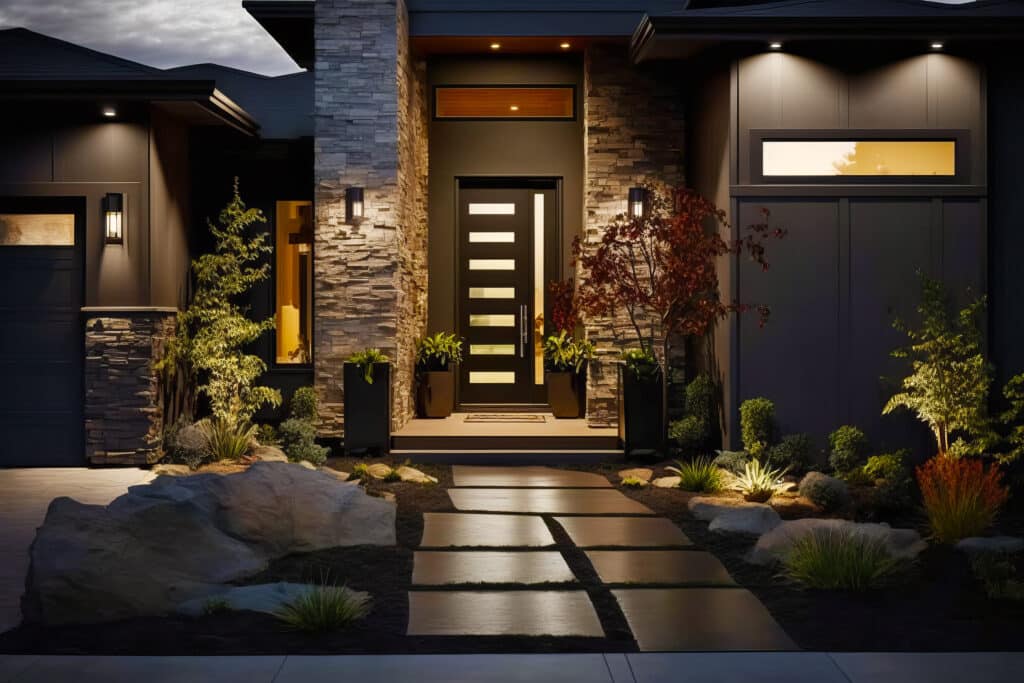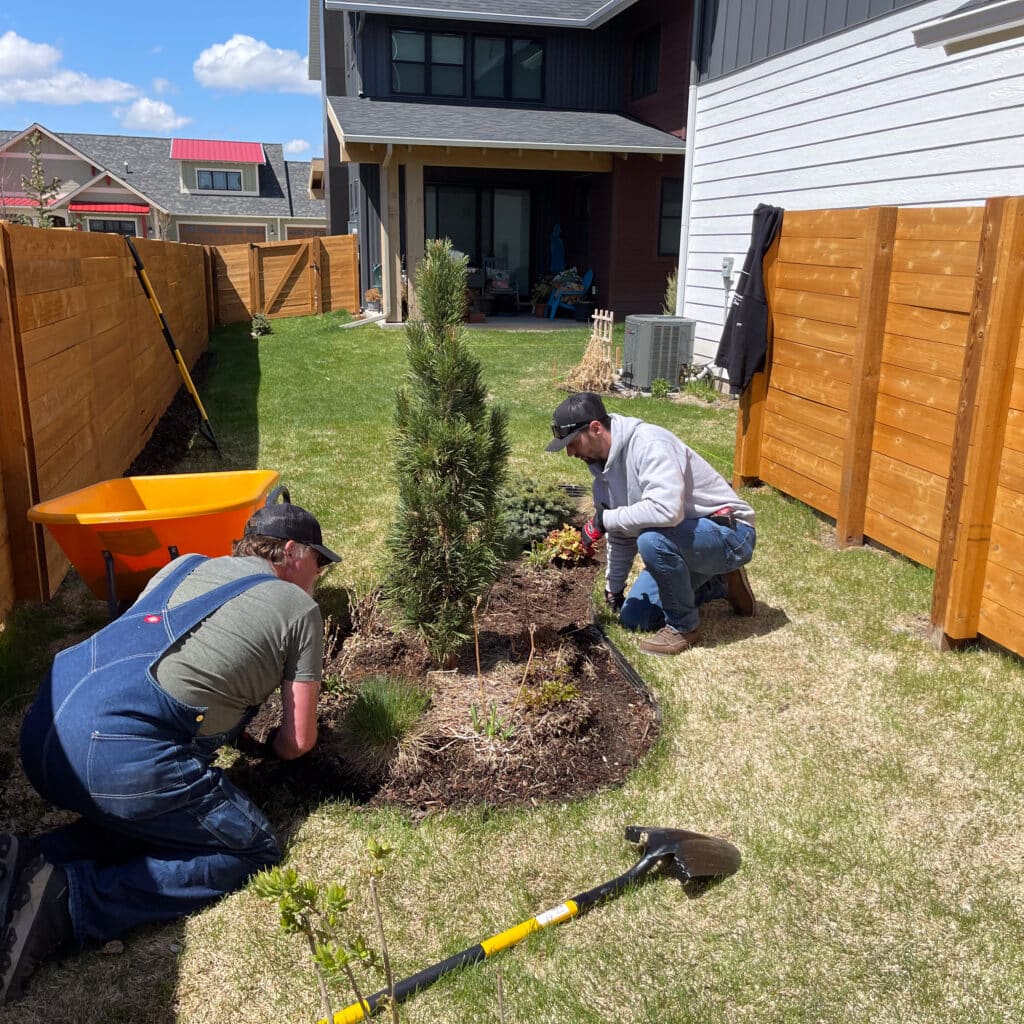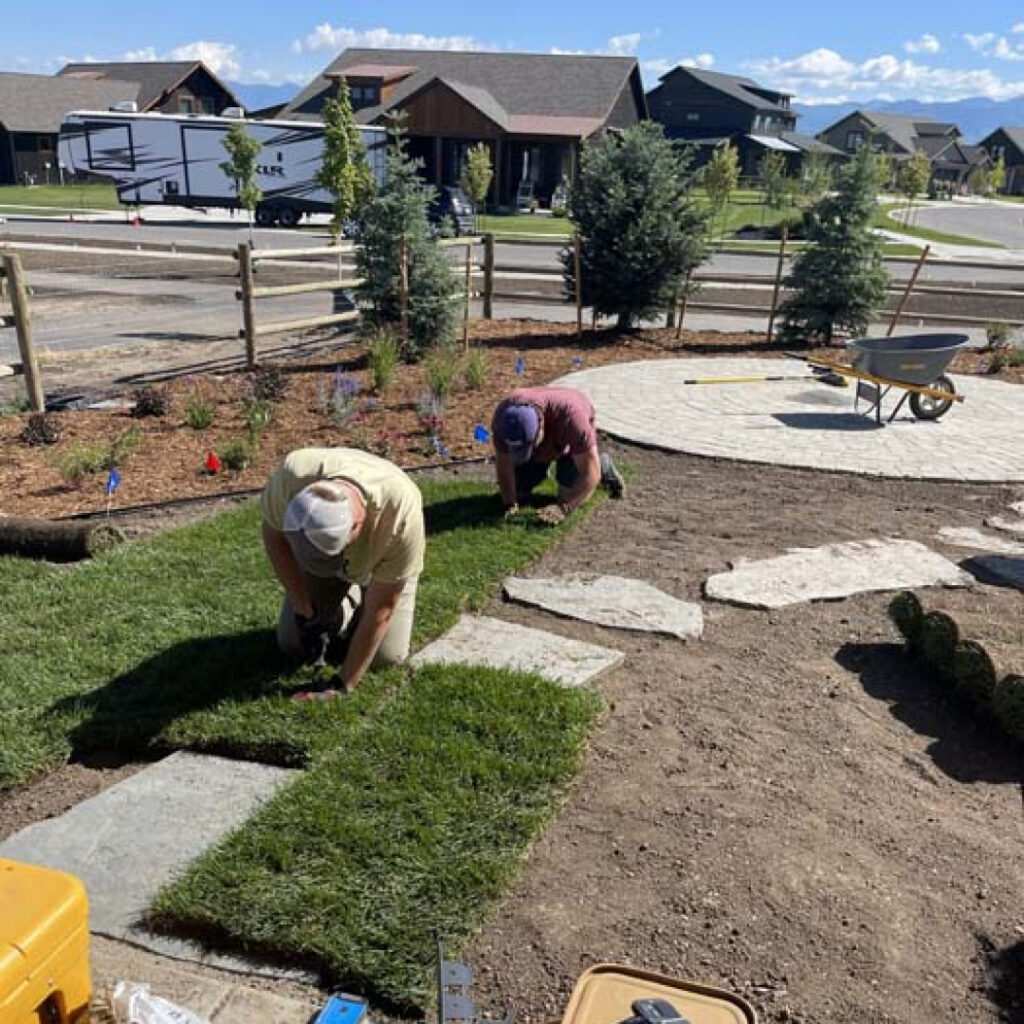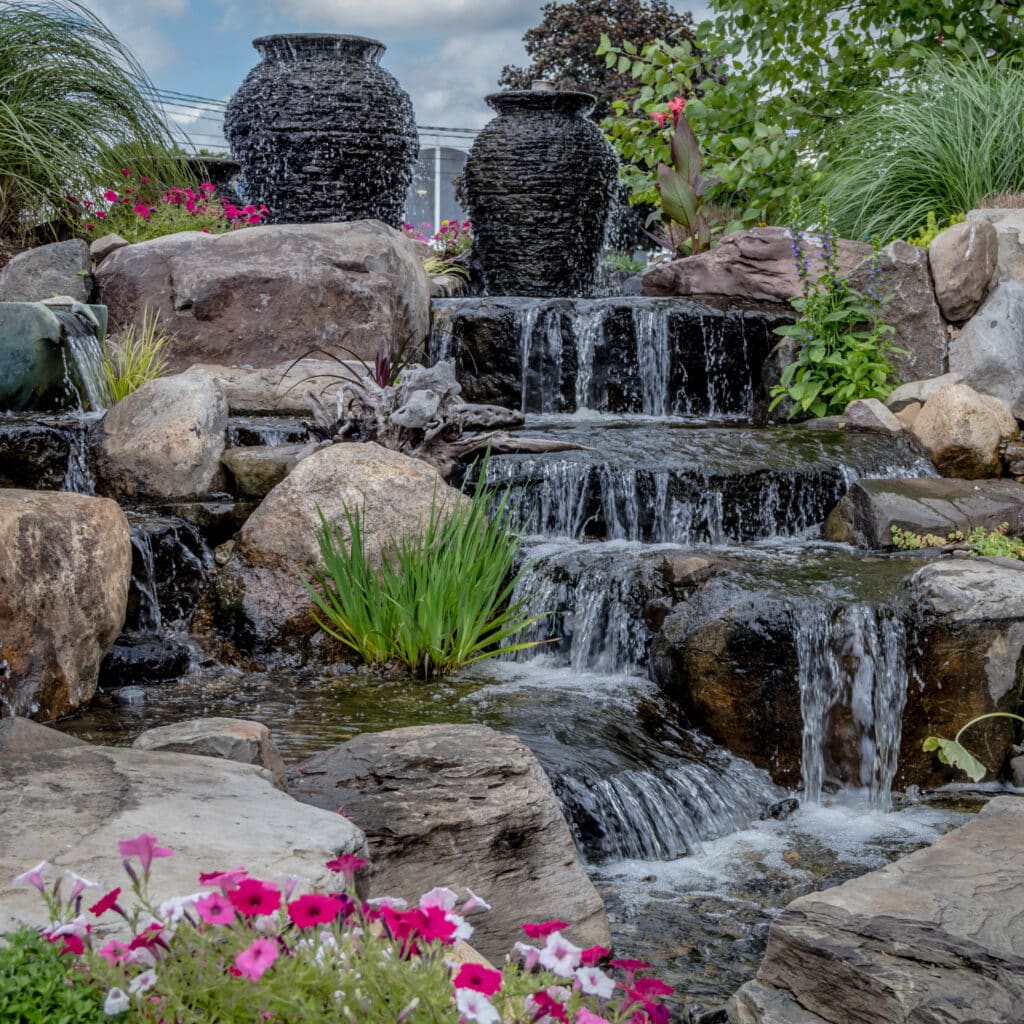Use low-voltage lighting, highlight key features, and consider options like pathway lights and spotlights.
Adding lighting to hardscape features can enhance the aesthetics and functionality of outdoor spaces during the evening. Here are steps and ideas on how to add lighting to hardscape elements:
Lighting Steps
1. Plan Your Lighting Design
Identify key hardscape features you want to highlight, such as pathways, steps, walls, or architectural elements.
2. Choose Appropriate Lighting Fixtures
Select lighting fixtures that suit the style and purpose of your hardscape. Options include:
- Path Lights: Illuminate walkways and driveways.
- Steps Lights: Provide safety and visibility on stairs.
- Wall Lights: Accentuate retaining walls or architectural features.
- Spotlights: Highlight focal points like trees, sculptures, or water features.
- Deck or Paver Lights: Install directly into decking or hardscape surfaces.
- String Lights: Create a festive and ambient atmosphere.

3. Consider Lighting Techniques
Decide on lighting techniques such as uplighting, downlighting, or grazing to achieve the desired effect.
- Uplighting: Illuminating features from below for a dramatic effect.
- Downlighting: Casting light downward for functional and subtle illumination.
- Grazing: Lighting along a textured surface to enhance its visual appeal.
4. Calculate Lighting Spacing
Calculate the appropriate spacing between fixtures based on the type and intensity of light desired. Path lights, for example, may require closer spacing than spotlights.
5. Install Wiring and Power Source
Plan and install wiring for your lighting fixtures. Ensure a reliable power source is available, and consider low-voltage options for safety.
6. Test the Lighting Layout
Before permanently installing fixtures, test the lighting layout at night to ensure it achieves the desired effect.
7. Install Lighting Fixtures
Install fixtures according to the manufacturer’s instructions. Securely mount them to hardscape surfaces or bury them in the ground.
8. Connect to Power Source
Connect the lighting fixtures to the power source. If using low-voltage lighting, connect to a transformer.
9. Conceal Wiring
Conceal wiring where possible to maintain a clean and uncluttered appearance. Bury wires in conduit or hide them along hardscape edges.
10. Set Timer or Automation
Install a timer or use automation tools to control the timing and duration of your hardscape lighting. This helps conserve energy and ensures lights turn on/off at desired times.
11. Choose Energy-Efficient Bulbs
Opt for energy-efficient LED bulbs to reduce energy consumption and maintenance.
12. Regular Maintenance
Perform regular maintenance checks to ensure that bulbs are working, fixtures are clean, and connections are secure.
Ideas for Hardscape Lighting
1. Pathway Lighting
Illuminate walkways with evenly spaced path lights to guide guests safely.
2. Steps and Stair Lighting
Install step lights on stairs for safety and aesthetics.
3. Wall Washing
Use wall lights to wash light down a retaining wall or architectural feature.
4. Tree Uplighting
Highlight trees with well-placed spotlights for a dramatic effect.
5. Water Feature Lighting
Illuminate water features with underwater or surface-mounted lights.
6. Deck or Patio Lighting
Embed lights into decking or hardscape surfaces for ambient lighting.
7. String Lights
Create a cozy atmosphere by stringing lights along pergolas, fences, or outdoor structures.
8. Focal Point Lighting
Draw attention to focal points such as sculptures, artwork, or unique hardscape elements.
9. Color-Changing Lights
Consider color-changing LED lights for dynamic and customizable effects.
10. Moonlighting
Place lights high in trees to mimic the soft illumination of moonlight.
Remember to balance practicality with aesthetics when designing your hardscape lighting. Experiment with different fixtures, placements, and techniques to achieve the desired ambiance for your outdoor space. Also consider professional hardscape lighting services from Top Dog.



